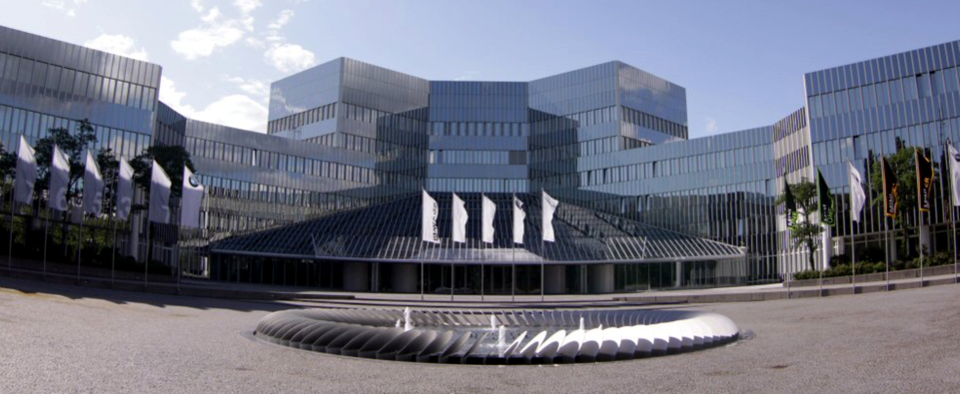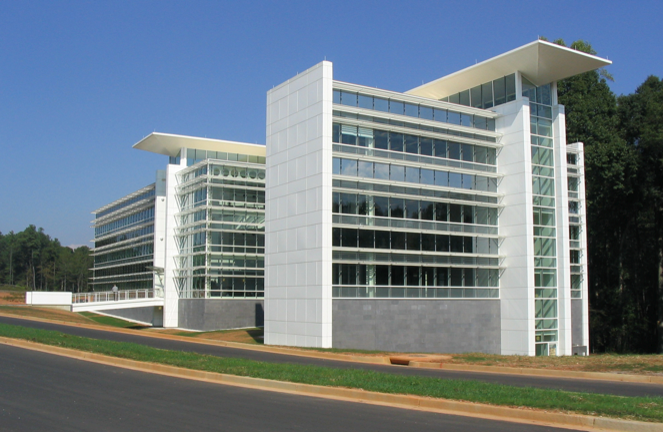Dr. Joachim G. Taiber - Founder
Taiber Group was founded by Dr. Joachim G. Taiber for the purpose to share his knowledge with stakeholders in the automotive ecosystem to encourage the development of innovative technologies and services which lead to a sustainable and intelligent transportation framework that is scalable and can be used in all parts of the world.
Educational Background
Born and raised in Germany and after serving at the Airforce of the Federal Republic of Germany, Dr. Taiber enjoyed his academic training at the Swiss Federal Institute of Technology in Zurich (ETHZ), Switzerland and his professional training at BMW AG and Mercedes-Benz AG in Germany. He first graduated with a master degree in mechanical engineering in 1991 and then with a PhD Degree in Technical Sciences in 1996.
Public and Private Entrepreneurship
During his studies Dr. Taiber had the pleasure to work with entrepreneurs directly in different projects and observed the importance of implementing an idea into a true business operation. He also joined a software start-up after the completion of his studies. During his time at BMW Group he worked with many start-up’s and helped create the foundation of a corporate venture fund to invest in start-up’s. He also worked as an “intrapreneur” at BMW ITRC and built an university institute from scratch at Clemson University International Center for Automotive Research. He initiated the creation of the non-profit organization ITIC and he also built his own consulting practice Taiber Group LLC. With Taiber Venture LLC he created a framework to engage directly in the development of new businesses. Dr. Taiber made a deliberate decision to leave the corporate and academic world to focus on his own public and private business undertakings but he stays closely connected with the corporate and academic world via many client interactions.
Professional Background
After completing his studies with ETH Zurich Dr. Taiber started his professional career at a Swiss 3D CAD/CAM modeling software start-up company in 1995 in Zurich as the assistant to the CTO. In 1997 he accepted an offer from BMW Group in Munich, Germany, to work as in-house consultant in the vehicle development division where he specialized on different aspects of functional integration and validation of vehicle systems, vehicle electronics platform development as well as vehicle program management for the BMW 7series, the BMW X5 and the BMW X3.
He was involved in a task force reporting to the BMW board of directors to reduce the vehicle development from 60 to 30 months and to use virtual engineering methods to replace physical vehicle testing by simulation testing to the maximum extent. He assisted the CEO as technical adviser which included the creation of a corporate venturing program (now being known as BMW i Ventures, https://www.bmwiventures.com) and supported the CIO in a major reorganization of the IT division (e-Business initiative) which resulted in holding different leadership positions in the areas of IT strategy, IT program management, IT innovation management and IT bench marking.
Driven by an ambitious US expansion plan of BMW Group which included a significant increase of the manufacturing capacity to export vehicles worldwide, Dr. Taiber was assigned in 2003 to the initial planning team to implement the master plan of a 250 acre automotive research campus in Greenville, South Carolina, to be operated in a public private partnership model with BMW Group as key investor, and to develop an automotive engineering curriculum framework to consider the needs of the private sector and to be implemented by Clemson University as educational and research partner. By 2018 the Clemson University International Center for Automotive Research (CU-ICAR, www.cuicar.com) has received more than $300 million in public and private investment, created close to 1’000 new R&D related jobs on the campus and employs more than 40 professors and supporting staff in the Automotive Engineering department that work with more than 200 master and PhD automotive engineering students.
The BMW Manufacturing Corporation operates the largest of all BMW production sites worldwide with an annual capacity of more than 400’000 vehicles and about 10’000 people employed in 2018. Dr. Taiber was also deeply involved in the development of an integrated corporate Vehicle-IT and Business IT strategy at BMW Group in the early 2000’s which was addressed with the creation of the BMW Information Technology Research Center (ITRC) - the first facility created on the CUICAR campus in 2005 - a dedicated building designed to collaborate with key BMW IT partners on open innovation and strategic advanced technology projects including the aspects of the “networked vehicle” and “the next generation data center”.
Dr. Taiber was first appointed as director of the Information Technology Research Office of the BMW ITRC in 2005 to lead the innovation activities and then promoted to general manager of the BMW ITRC in 2007. Dr. Taiber developed a close relationship to the BMW Tech Office in Silicon Valley as well as with a multitude of large tech companies, start-up’s and universities during his assignment at BMW ITRC.
In 2010 Dr. Taiber joined Clemson University as research professor and member of the Automotive Engineering, the Electrical & Computer Engineering and the Computer Science faculty. In 2012 he created the Advanced Vehicle-Infrastructure Technology Institute under the College of Engineering & Science which he led as director until the end of 2015. During his 5 year lasting academic engagement, Dr. Taiber worked intensively on the development of vehicle electrification and charging infrastructure (in particular in-motion wireless power transfer) as well as on connected vehicle systems and intelligent transportation infrastructure.
In January 2016 Dr. Taiber was appointed CTO of the International Transportation Innovation Center (ITIC, www.itic-sc.com), a special purpose non-profit organization headquartered in Greenville, South Carolina, where he is focused on developing and applying innovative methods of system validation for connected, automated, shared and sustainable forms of mobility both with industrial, academic, governmental and municipality partners. He continues to serve Clemson University as adjunct professor of the faculty of Automotive Engineering at CUICAR.
Via his private consulting practice he is involved in the development, implementation and operation of open and closed mobility testbeds both at a national and international scale. Via his venture practice he engages in the development of new mobility related businesses. He continues to serve Clemson University as adjunct professor at CU-ICAR. Furthermore he acts as smart mobility advisor to the IOTA Foundation and is active in transportation related standards development efforts both at SAE and IEEE. He is also member of the advisory board of the Peace Innovation Foundation.
The creation of ITIC was a result of Dr. Taiber’s collaboration with the South Carolina Technology & Aviation Center (SCTAC, www.sc-tac.com) which is one of the largest business parks in South Carolina having emerged from the reutilization of a WWII military airport. During his term at BMW ITRC Dr. Taiber was involved in the testing of 4G V2X connectivity tests utilizing a State-owned frequency spectrum which were performed at the BMW test track affiliated to the BMW plant in Spartanburg. As the test track was too limited in its capabilities for high speed tests and multi-party testing he was on the search for a larger highly configurable test site in close proximity to CUICAR. SCTAC had an underutilized runway/taxiway road system which was well suited for V2X connectivity tests.
SCTAC is governed by the City and County of Greenville and the portion of the business park with the underutilized road system was assigned to a newly formed special purpose 501c3 non-profit organization called ITIC. A strategic joint initiative between CUICAR and SCTAC was initiated in 2010 to develop via ITIC a testbed for connected and sustainable transportation and financially supported by the South Carolina Department of Commerce via an economic development grant. Thus the road system at ITIC was reutilized for vehicle/infrastructure-related research (testing of vehicle communication networks and electric vehicle charging systems), vehicle testing and technology demonstration events. In 2015 a master plan for the implementation of a testbed for connected and highly automated driving and a mobility experience center was completed under the program leadership of Dr. Taiber by the German design engineering company Tilke (www.tilke.de) which created the foundation for the further development of ITIC.
Development of Smart Mobility Testbeds
Dr. Taiber became already involved in the utilization of traditional automotive test tracks in the early part of his career at BMW Group and his first internal client as BMW in-house consultant was the head of the automotive vehicle testing department. What he learned that simulation methods typically have their limits in how precisely they reflect the real-world physical behavior of a complex mechatronic system such as a car. Virtual engineering leveraging simulation methods and digital product description was instrumental to accelerate the product development process and improve the product quality with a significant reduction of the use of physical prototypes.
What was an interesting experience for Dr. Taiber was some research and development work he has done with a major chip manufacturer while he worked at BMW ITRC where he was told that a 4G network could be perfectly simulated for connected vehicle applications. It turned out that physical testing was absolutely essential and that the simulation model had to be adapted based on experimental results gained on a real test track.
With the arrival of connected and electrified vehicle technology it became apparent that the interaction between vehicle and infrastructure is essential and needs to be properly tested. But it also important to understand that infrastructure service providers need to integrate to many OEM’s so that an OEM specific test track does not make sense from a mobility ecosystem perspective.to validate the different V2X system configurations.
As the automotive world further develops towards shared and on-demand mobility, the emphasis from a customer perspective moves from a product focus to a service focus. This means that it is not only important that the product is being tested for safe and secure functionality in all modes of operation but also the mobility service itself needs to be tested. This requires to include the infrastructure such as communication and charging networks into the testing procedures.
If vehicle automation is also being considered up to driverless vehicle operation, the required test infrastructure (the TESTBED) gets significantly more complex. In the non-automated world of driving, the ultimate control over the vehicle is with a human being and his senses of seeing, hearing, feeling and smelling and his ability to use hands and feet for steering, braking and accelerating are instrumental for safe and secure operation. By using vehicle sensors and vehicle actuators and combining them with control algorithms using artificial intelligence methods as well as high performance computing and networking, the human being’s capabilities to control a vehicle can be significantly enhanced and ultimately the human driver can be replaced. The driving environment needs to be fully digitized for an automated vehicle and the vehicle responses to any situation anticipated on the road are purely data driven. In a world where manual-driven vehicles are the exception and automated vehicles are the norm, the optimization of traffic flow does not depend any longer on human driving behavior but it will be based on shared information among the vehicles and the supporting infrastructure.
The current vehicle certification process very much depends on passing standardized test procedures which center around the safe operation of the vehicle. Standards to consider the secure operation of a vehicle are still in development.
What is important in the future is to validate the safe and secure operation of a mobility service which can be fully automated in an environment that has a well defined complexity of its operational environment. The validation requires the use of cyber physical testbeds which are able to provide an operational environment of a desired complexity and which can create any operational scenario to be considered. Once the mobility service is validated from a safety and security perspective, it needs to holds it operational promise over a well defined time of use which can then be considered for the certification of the mobility service. The validation typically is done first in a fully simulated environment and then in a closed cyber physical testbed to determine any operational risks. Once the identified risks are properly understood and can be managed, the mobility service can then be further validated in an open testbed. The certification can be based on a combination of simulated and real world system operation accumulating a certain operational distance or time.
What is important that the quality of the V2X network capabilities can influence the cost of automated vehicle operation. So testing a standardized V2X communication infrastructure that can be leveraged by multiple OEM’s and mobility service operators is strategically important in particularly for Smart City mobility initiatives as well as automated highway scenarios.
International Smart Mobility Testbed Alliance
Dr. Taiber initiated the formation of the International Smart Mobility Testbed Alliance based on a workshop he organized at the Smart City NYC conference in 2016. All over the world Smart City initiatives have been established as well as many automated vehicle pilot programs. In particular in urban environments shared mobility has become the “new norm” and using mobility services on demand versus using your own car which typically is an underutilized asset has shifted the focus of Automotive OEM’s towards new business models. As the cost of a human driver can be substituted with automated driving technology, a strong emphasis emerged on testing automated vehicles both for passenger transportation as well as for freight transportation. In order to allow mass deployment of automated vehicles, regulations need to be put into place to allow a safe and secure operation of those vehicles. But even automated vehicles are just one component in fully digitized mobility as a service platforms which need to be properly validated in terms of operational risk.
The International Smart Mobility Testbed Alliance is creating a global community of designers, operators and users of testbeds and has the following vision and mission:
Vision:
Our vision is to create a global community of users, designers and operators of mobility-as-a-service cyber physical testbeds that contributes to the quality standard development how automated transportation solutions are being validated and certified to minimize operational risk in real world deployment.
Mission:
Develop a unique international portfolio of smart mobility testbeds that meet the highest quality standards and are being constantly updated according to shared best practices and research outcomes to accelerate the adoption of automated mobility services. Generate test data sets that can be utilized across the network of certified mobility-as-a-service testbeds in a plug-and-play manner.
For 2019 it is planned that the Alliance is changing its status into a true association and implements a formal membership model.







